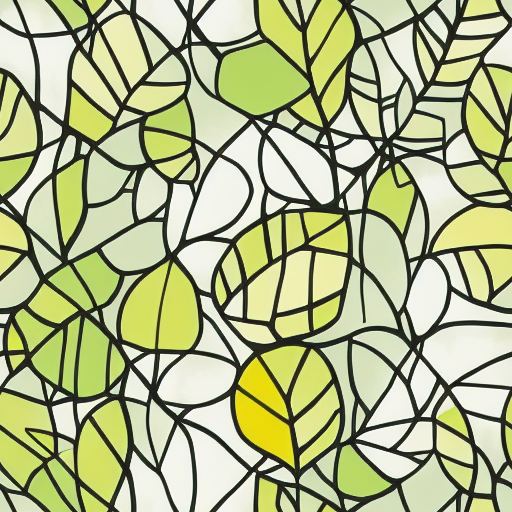Creating seamless patterns using PatternedAI can be a fun and rewarding experience, but knowing how to craft a well-constructed prompt is key to achieving the results you want. In this guide, we will walk you through the different elements of a basic prompt, so you can create beautiful and unique patterns.
Prompt Elements
Core Prompt
The core prompt is the central theme or subject that you want your pattern to revolve around. This can be anything from animals, nature, or abstract shapes. Here are a few examples of a core prompt for seamless patterns:
- Flower
- Geometric shapes
- Butterfly
- Leaves
- Palm tree
While a simple core prompt can sometimes produce nice results, a more specific and detailed core prompt can lead to more intricate and unique patterns.
Style
Choosing a style for your pattern is important to ensure that it aligns with your vision. There are various styles you can use, such as:
- Abstract
- Vintage
- Modern
- Minimalistic
To incorporate a style into your prompt, you can use phrases such as "a modern pattern of [core prompt]" or "a vintage-inspired pattern of [core prompt]". Here are some examples of prompts for different styles:
- "A minimalistic pattern of leaves"
- "A vintage-inspired pattern of flowers"
- "An abstract pattern of geometric shapes"
Artist
Adding an artist's name to your prompt can help you achieve a specific look and feel for your pattern. Here are some artists that you can incorporate into your prompt:
- Wassily Kandinsky
- Piet Mondrian
- Yayoi Kusama
- Henri Matisse
You can add an artist's name to your prompt to make it more specific, such as "A pattern of leaves inspired by Yayoi Kusama" or "A geometric pattern inspired by Piet Mondrian".
Finishing touches
Finishing touches are the extra details that you can add to your prompt to give it the perfect finishing touch. Some examples of finishing touches for seamless patterns are:
- Subtle colors
- Contrasting colors
- High contrast
- Bold lines
- Fine lines
- Organic feel
- Geometric shapes
You can combine finishing touches to make your pattern even more unique, such as "A vintage-inspired pattern of flowers with bold lines and high contrast".
Examples:
- Core prompt: Leaves Style: Modern Artist: Piet Mondrian Finishing touches: Subtle colors, fine lines Prompt: "A modern pattern of leaves inspired by Piet Mondrian with subtle colors and fine lines."
- Core prompt: Flowers Style: Abstract Artist: Wassily Kandinsky Finishing touches: High contrast, organic feel Prompt: "An abstract pattern of flowers inspired by Wassily Kandinsky with high contrast and an organic feel."
- Core prompt: Geometric shapes Style: Vintage Artist: Henri Matisse Finishing touches: Contrasting colors, bold lines Prompt: "A vintage-inspired pattern of geometric shapes inspired by Henri Matisse with contrasting colors and bold lines."
Prompt Weighting
prompt weighting lets users control the prominence of certain elements in a pattern, such as colors or shapes. By providing a base prompt and adjusting the weights of these elements, users can refine the final pattern to their liking and create more customized designs.
You can increase words weighting by using ”()” or decrease words weighting by using ”[]”
- a (word) - increase attention to word by a factor of 1.1
- a ((word)) - increase attention to word by a factor of 1.21 (= 1.1 * 1.1)
- a [word] - decrease attention to word by a factor of 1.1
- a (word:1.5) - increase attention to word by a factor of 1.5
- a (word:0.25) - decrease attention to word by a factor of 4 (= 1 / 0.25)
- a (word) - use literal () characters in prompt
With (), a weight can be specified like this: (text:1.4). If the weight is not specified, it is assumed to be 1.1. Specifying weight only works with () not with [].
Negative Prompt
Negative prompt can be used as a parameter to inform the AI what to avoid in the final output. Negative keywords can help prevent specific features, styles, or image issues from appearing in the generated images. It can help you achieve more refined control when used properly.
Examples:
prompt:
A rustic pattern inspired by Navajo weavers with Southwest motifs, earth tones, and bold lines
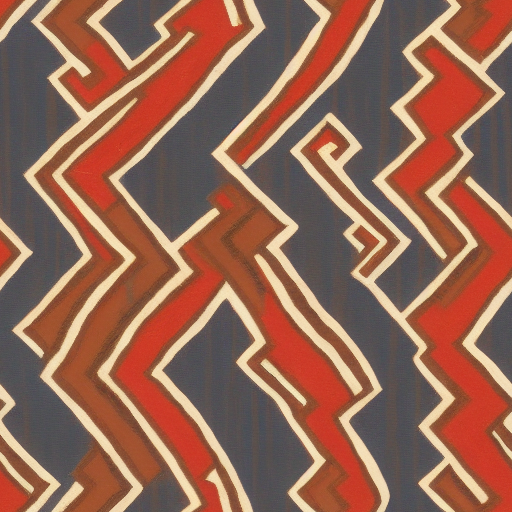
adding: symmetrical, straight lines
A rustic pattern inspired by Navajo weavers with Southwest motifs, earth tones, and bold lines, symmetrical, straight lines
negative prompt:
deformed, asymmetrical, wavy lines, blurred, low quality
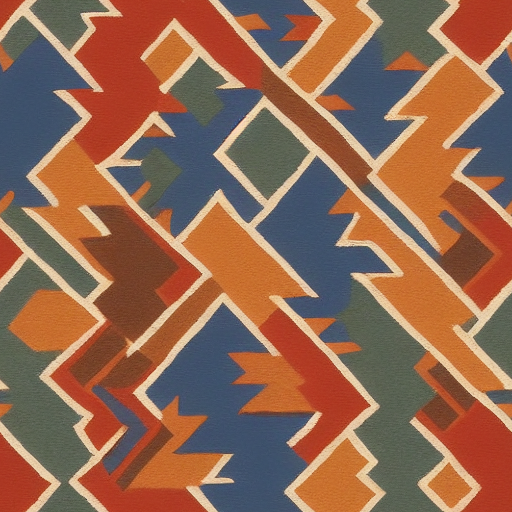
adding: regular shape
prompt
A rustic pattern inspired by Navajo weavers with Southwest motifs, earth tones, and bold lines, symmetrical, straight
lines, regular shape
negative prompt
irregular shape, deformed, asymmetrical, wavy lines, blurred, (low quality), ( on fabric), (real photo)

Adding weight
prompt:
A rustic pattern inspired by Navajo weavers with Southwest motifs, earth tones, and bold lines, symmetrical, straight
lines, (regular shape:1.3)
negative prompt:
(irregular shape:1.4), (deformed), (asymmetrical), (wavy lines), (blurred), (low quality)
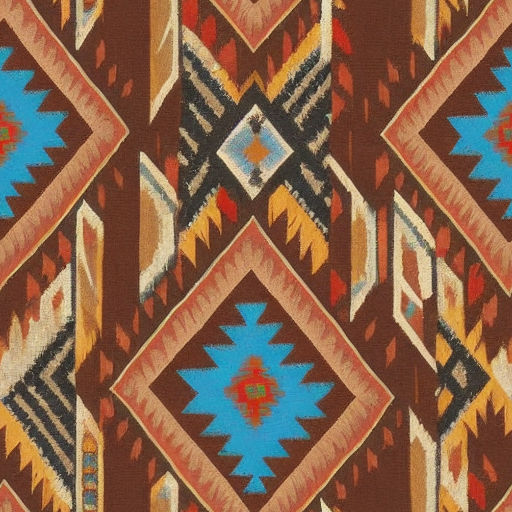
Example 2
Modern pattern with leaves
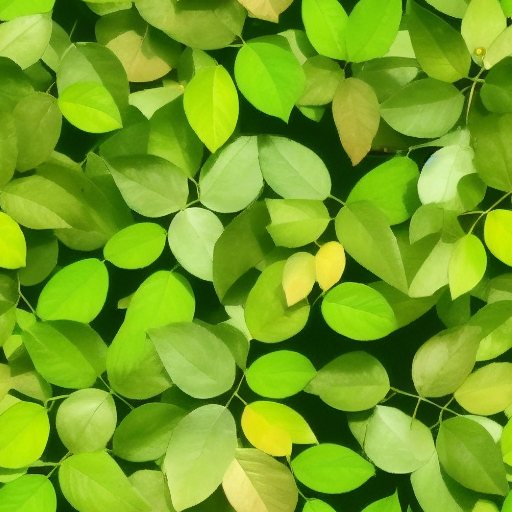
A modern pattern of leaves inspired by Piet Mondrian
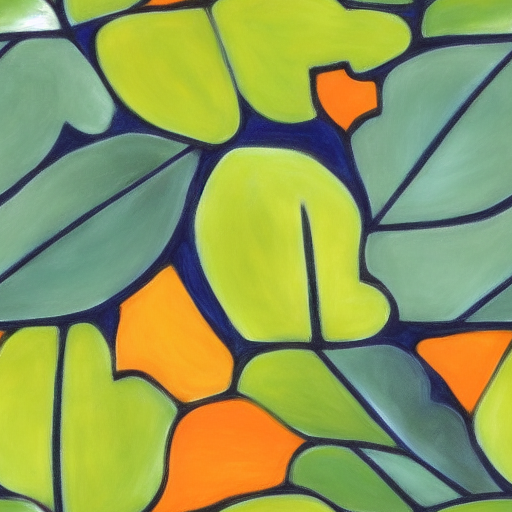
A modern pattern of leaves inspired by Piet Mondrian with subtle colors and fine lines.”
